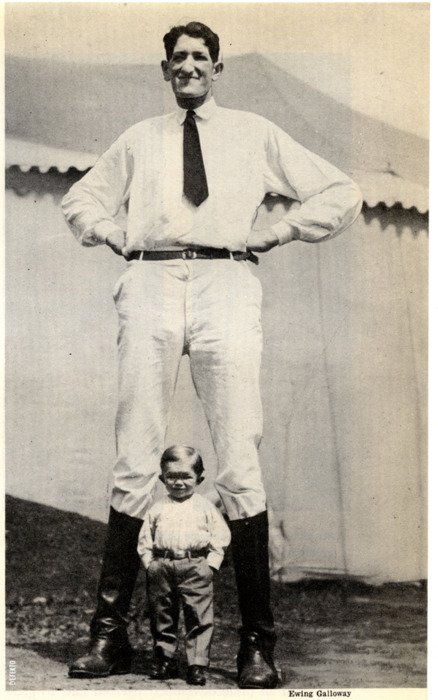Want to make a quick $100?

Fantasy & Science Fiction is running a contest this month (July 1959) related to one of the stories in the latest issue. Of course, I immediately turned to page 87 to read the story.
Success Story is the tale in question, and it's by a fellow whose work I'd never read before, a Ms. or Mr. H.M. Sycamore. I'll tell you the whole plot since I don't have permission to reprint, and I suspect you'll all want a chance to get in on this contest before it's too late.
Stan Budzik has invented a time machine, or at least figured how to make one. But he needs financial backing to get it off the ground to the tune of a whopping $7,000. Enter Harry Bottomley, a diminutive young man with one suit and just over $7,000, the proceeds of a recent inheritance.
Through a series of mishaps, Mr. Bottomley ends up as the world's first time traveller, albeit unwillingly. Unfortunately the guy, who already has a complex about his height, not only ends up one day in the future, he also finds himself just two-and-a-half feet tall!
It turns out that the expansion of the universe affects everything universally, including its denizens. Harry, having missed out on a day of expansion, is half his former size in relation to everything else. Naturally, this causes a near meltdown for Harry. But what goes forward can also go backward. Harry makes a return trip from the future to regain his original size, but this time, he travels back a little more than a day, and ends up a strapping 6 foot 4 inch hunk of a man.
Stan and his team realize they've hit upon something and sell "height therapy" to folks with Short Man's Syndrome. The one complication, mentioned off-handedly in the story's conclusion, is that while volume changes, mass does not. A 120-pound bantam Harry became a 120-pound hulk. I imagine Mr. Bottomley became a "floater" if he was previously a "sinker."

Now for the contest: Stan figured out a profitable use for this time machine. Can you? Remember the parameters:
Anything can be sent through time, but it will shrink in size by a factor of two for each day it transits; conversely, it will double in size for each day it travels backward. This makes it impractical for explorative time travel, I would think. Mass stays constant.
Here's my idea:
Since mass stays the same, regardless of size, the device is not particularly useful for miniaturization. On the other hand, one could make some awfully light dirigibles using canisters of gas sent back in time. With the cost of helium not inconsiderable, I could see some definite use of this application.
For your chance at a crisp C-note, send your ideas to:
Success Editor
Fantasy and Science Fiction
527 Madison Ave.
New York 22, New York
If you'll send me a copy, I'll print it in this column so all can bask in your cleverness.
Next time, I'll review the rest of the magazine. In the meantime, let's see your ideas!
(Confused? Click here for an explanation as to what's really going on)
This entry was originally posted at Dreamwidth, where it has comments. Please comment here or there.
